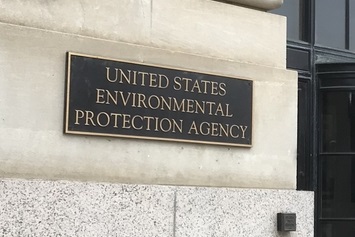The EPA’s Office of Enforcement and Compliance Assurance (OECA) has finalized a policy document titled Enforcing Effective Partnerships Between the EPA and the States in Civil Enforcement and Compliance Assurance Work. The intent of the document is to delineate to the extent possible how the EPA and states that are authorized to implement and enforce federal regulatory programs can work cooperatively so that neither party’s actions subvert, contradict, or unnecessarily duplicate the actions of the other party.
Truly efficient cooperation in enforcement between the EPA and the states is a long-standing goal that each administration tries to achieve in spite of differing priorities, issues that are unique to certain states and regions, federal initiatives, and changing political leadership.
EPA-ECOS Workgroup
The final policy builds up several developments. The first is an October 2018 memo from EPA Administrator Andrew Wheeler, which “complemented and modernized earlier EPA statements on EPA and state roles.” That memo outlined four principles relevant to the enforcement of federal environmental laws—general deference to the states in state-implemented programs, consistent with the EPA’s oversight responsibilities; effective communication between the EPA and the states; clear standards of review and predictable processes; and a clear process for elevating enforcement issues above the purview of career staff.
Second, in a complementary process, the EPA and the Environmental Council of the States (ECOS) convened an EPA-ECOS Compliance Assurance Workgroup in September 2017 to develop practical procedures to advance cooperation between the EPA and state enforcement offices. The Workgroup published a consensus-based series of recommendations in August 2018 that touched on the four principles in the Wheeler memorandum.
Joint Planning and Regular Communication
The final OECA policy articulates the following expectations and best practices:
- Cooperative, periodic, and early joint planning and regular communication between the EPA and states to promote enhanced, shared accountability between federal and state enforcement authorities. “A no-surprises principle is the foundation of joint work planning and will minimize misunderstandings that can be caused by the lack of regular, bilateral communication,” says the OECA.
- Varying the timing, method, preparation, and participants for joint planning. The objective here is to allow career managers (i.e., those with day-to-day responsibility for enforcement and compliance) to handle most work-sharing and inspection tasks. Senior individuals are likely to enter discussions when issues are “more significant.”
- Joint planning should go beyond timing individual inspections and include a discussion of the environmental compliance problems and needs in the state; national, regional, and state compliance assurance priorities; emerging issues; and how the combined resources of the EPA and the state could be used to address these needs.
- EPA regions and the states should work together to identify which inspections the EPA or a state will perform. Inspection planning will avoid duplicate efforts, improve efficiency, reduce unnecessary burdens on the regulated community, and provide the EPA regions and states with more flexibility in setting and adjusting inspection targets. The best practices included under this topic include exchanging and discussing targeting rationales and draft inspection plans as early as possible; providing advance notice of inspections; extending invitations to the EPA or the state to participate in inspections where there is value in such participation; and sharing information requests and inspection reports with each other when those documents are sent to the regulated party.
- The EPA should communicate with states when the Agency believes that an enforcement action is warranted in that state. The communication should include a review of the EPA’s observations and findings from inspections and other case development techniques. The communication should include a discussion about whether the enforcement action should be federal, state, or joint and the type of action to be taken. When the EPA is taking an enforcement action in a state, the EPA should notify the state before notifying the facility.
Finally, the draft emphasizes that the EPA will defer to states that conduct inspections and enforcement under federal programs the states are delegated to implement. But there are exceptions. For example, the EPA is expected to take the lead when states request that the Agency do so; when there are violations of a National Compliance Initiative; when there are public health and environmental emergencies; or when the state lacks the equipment, resources, or expertise to take the lead.

